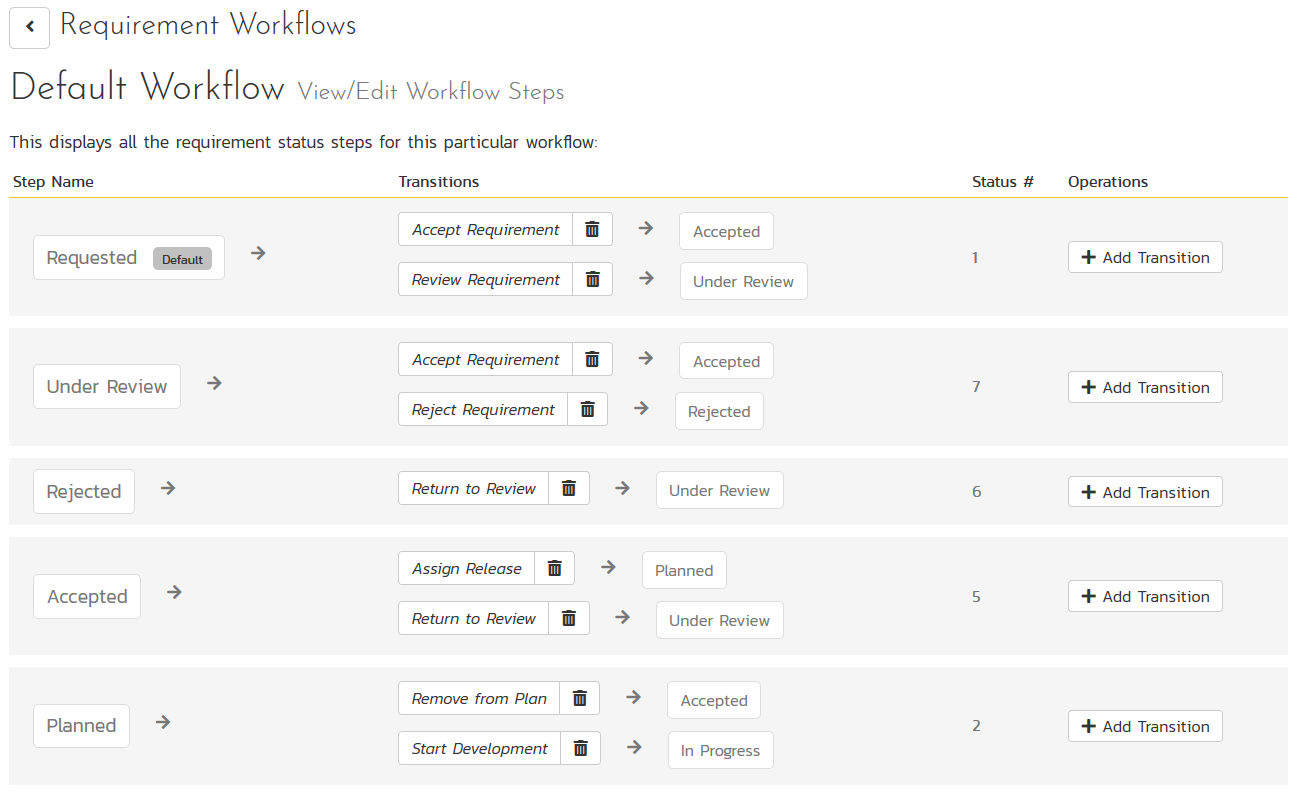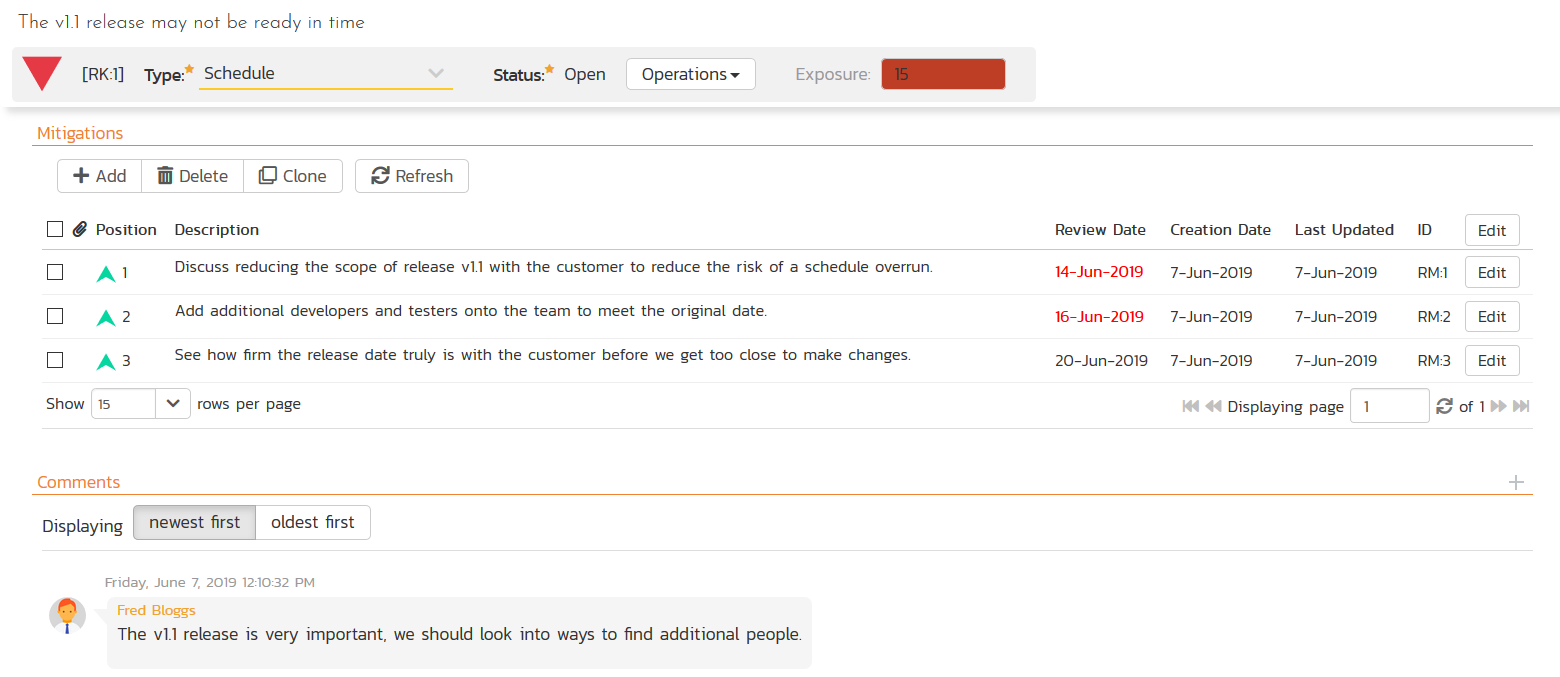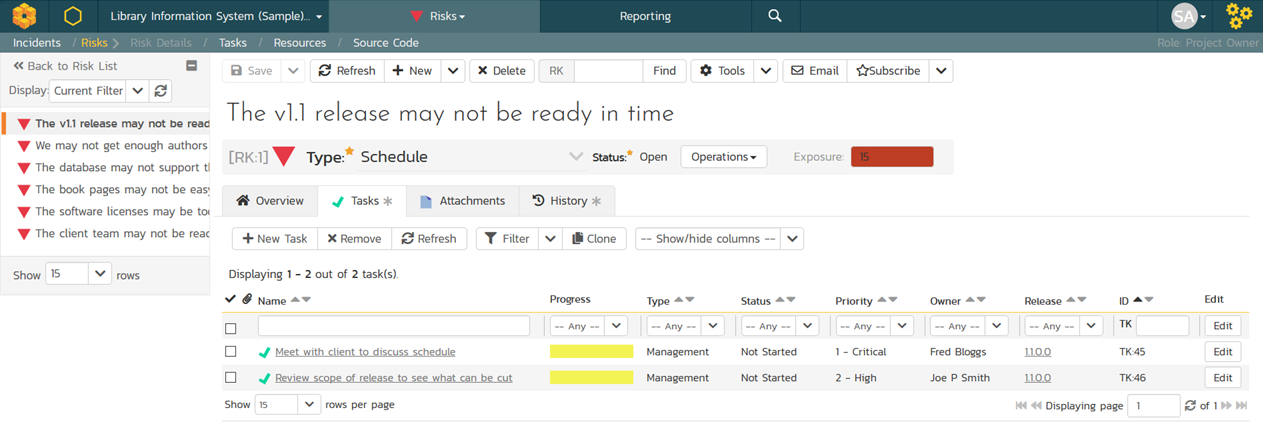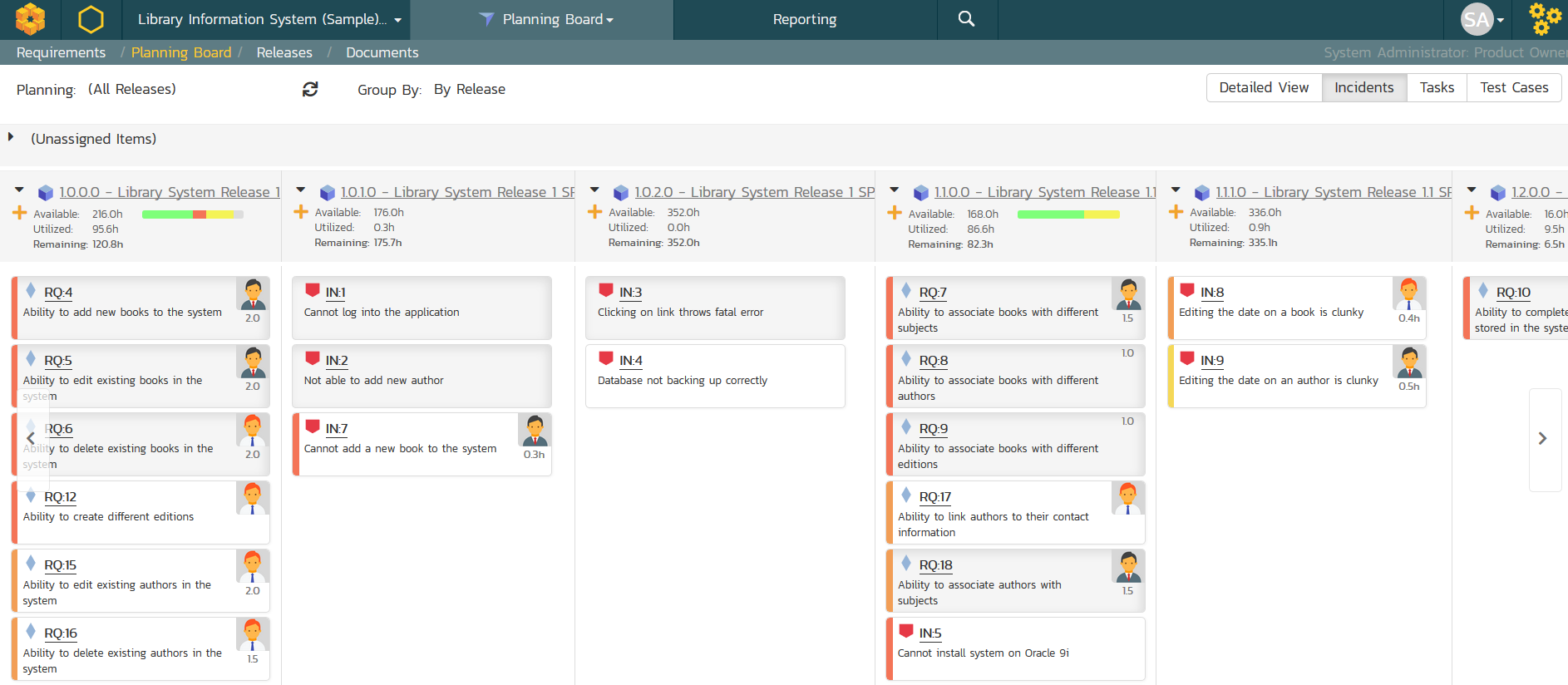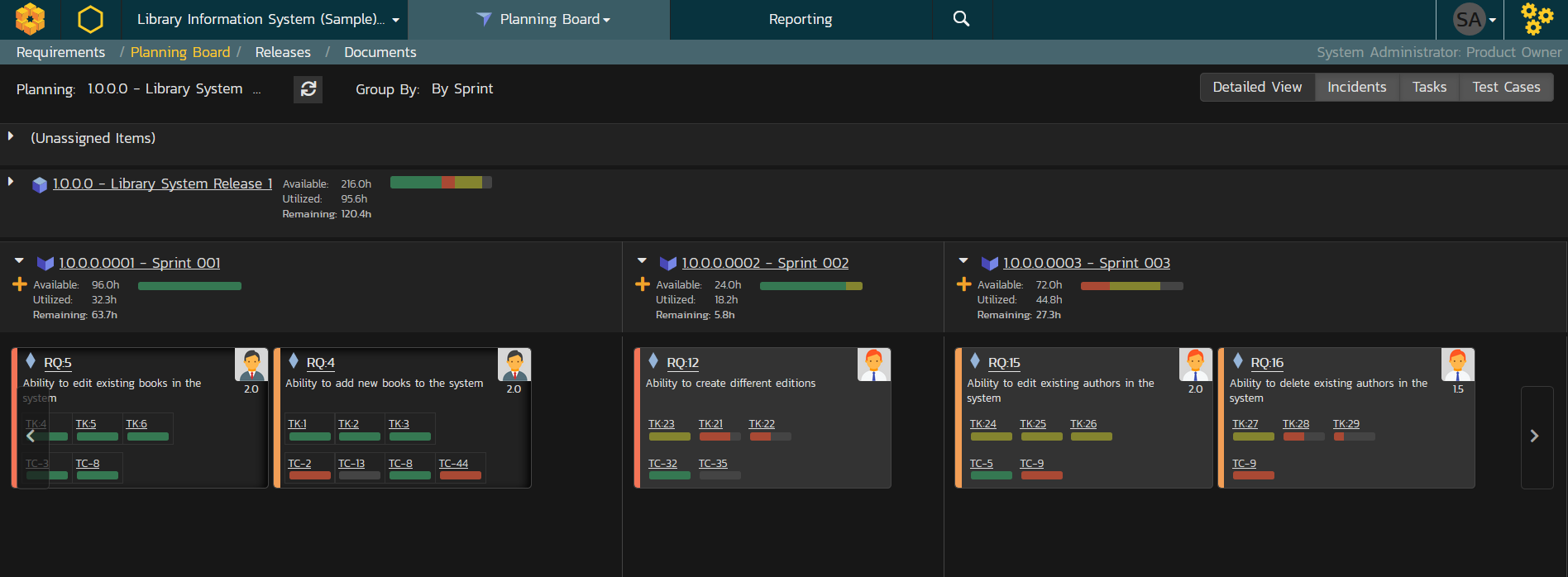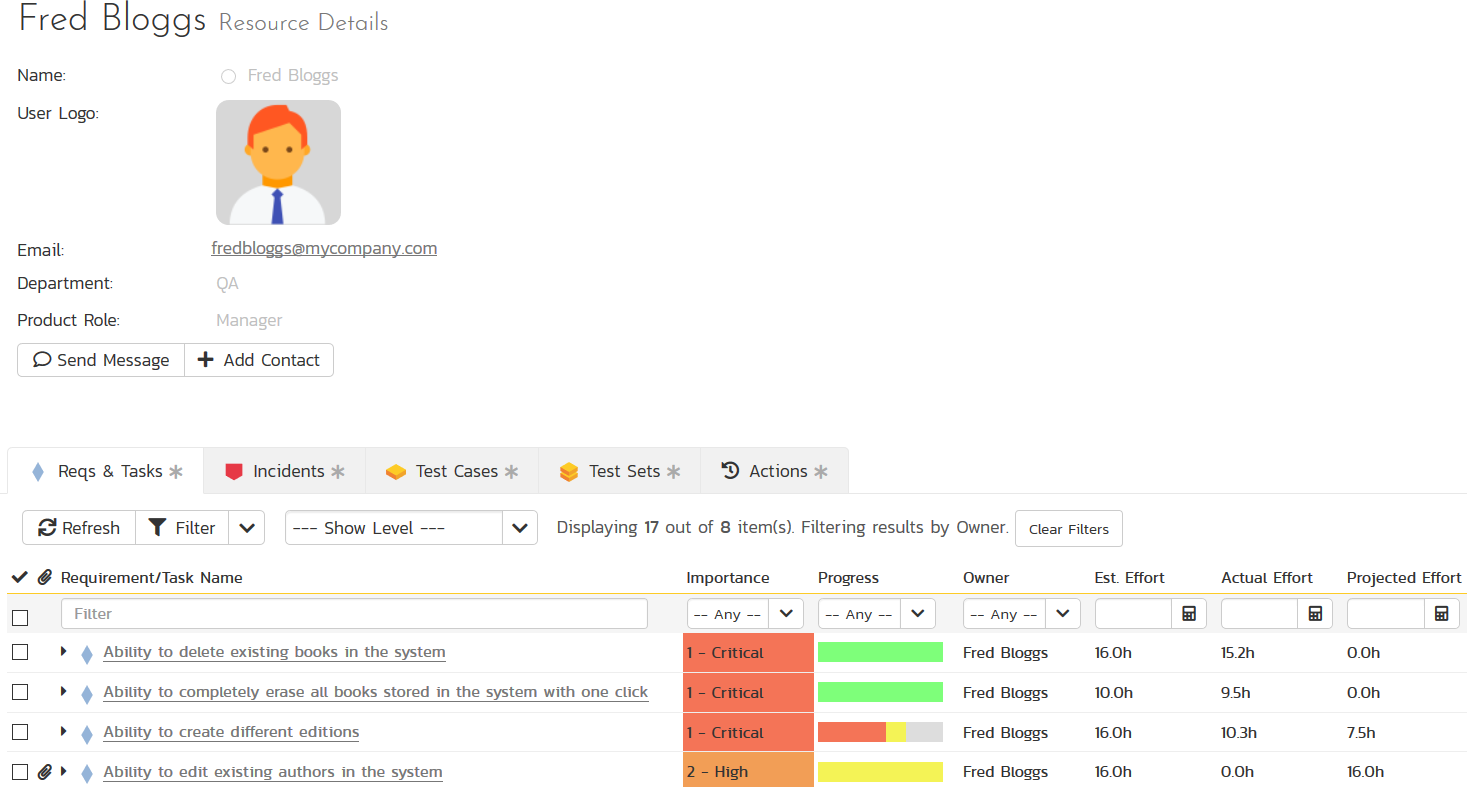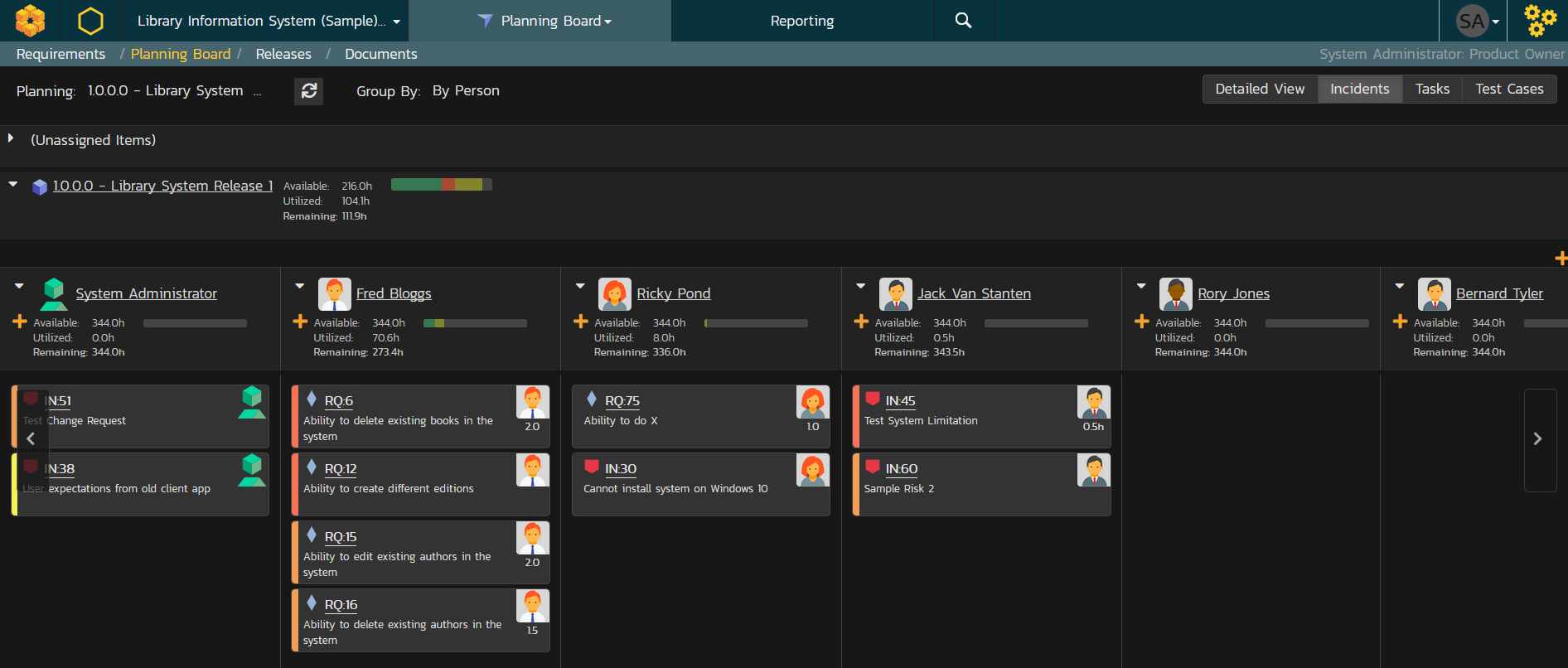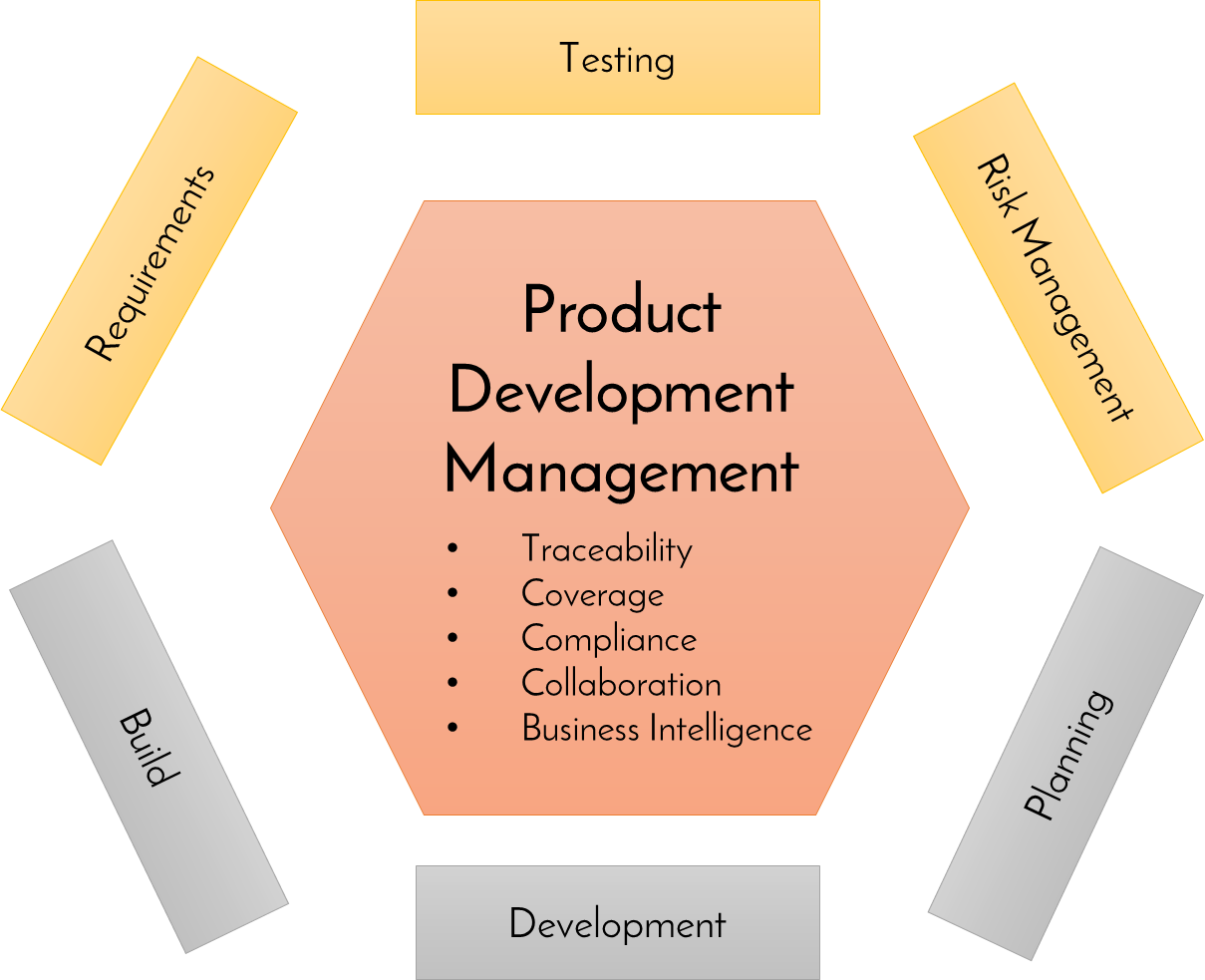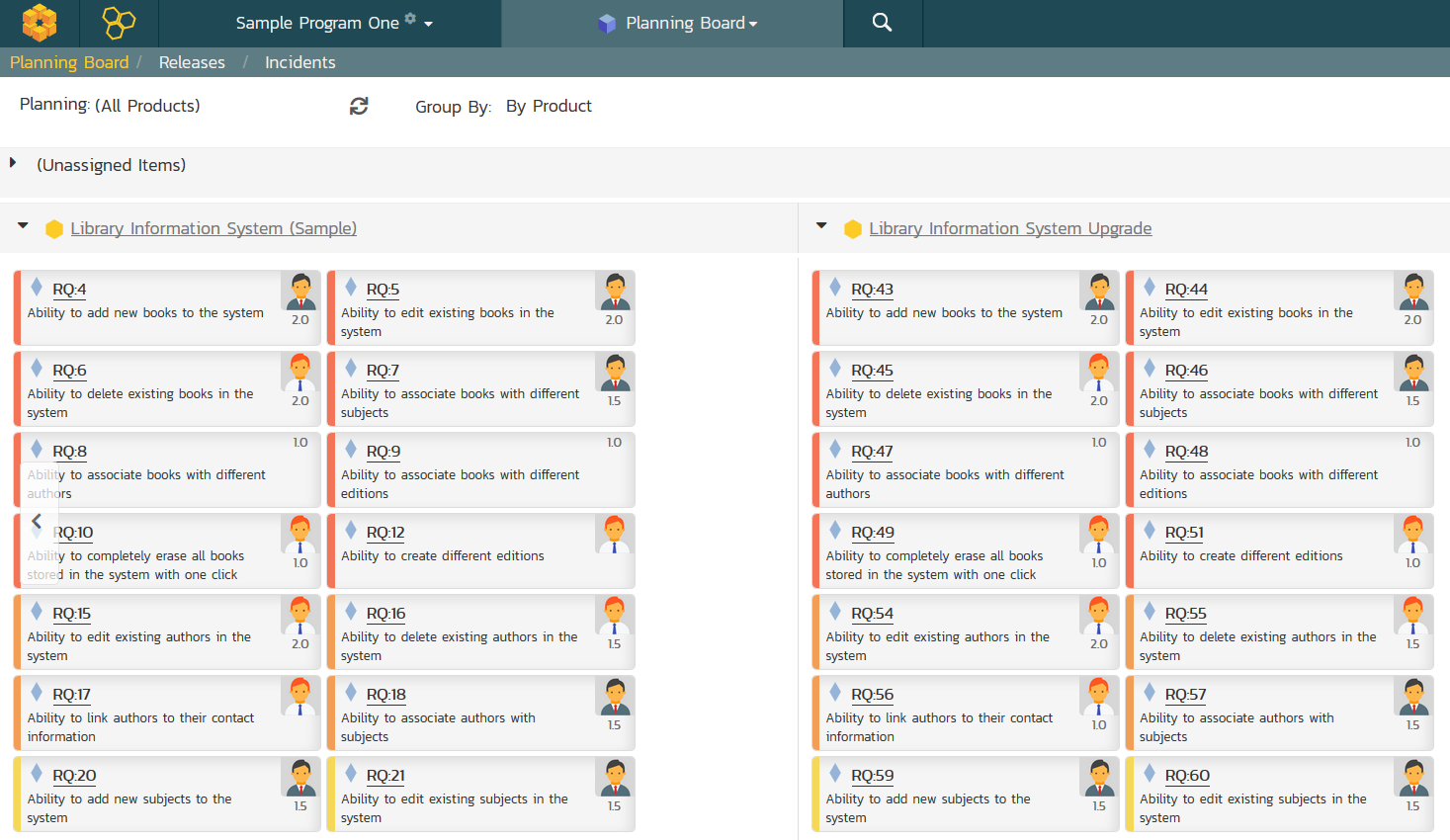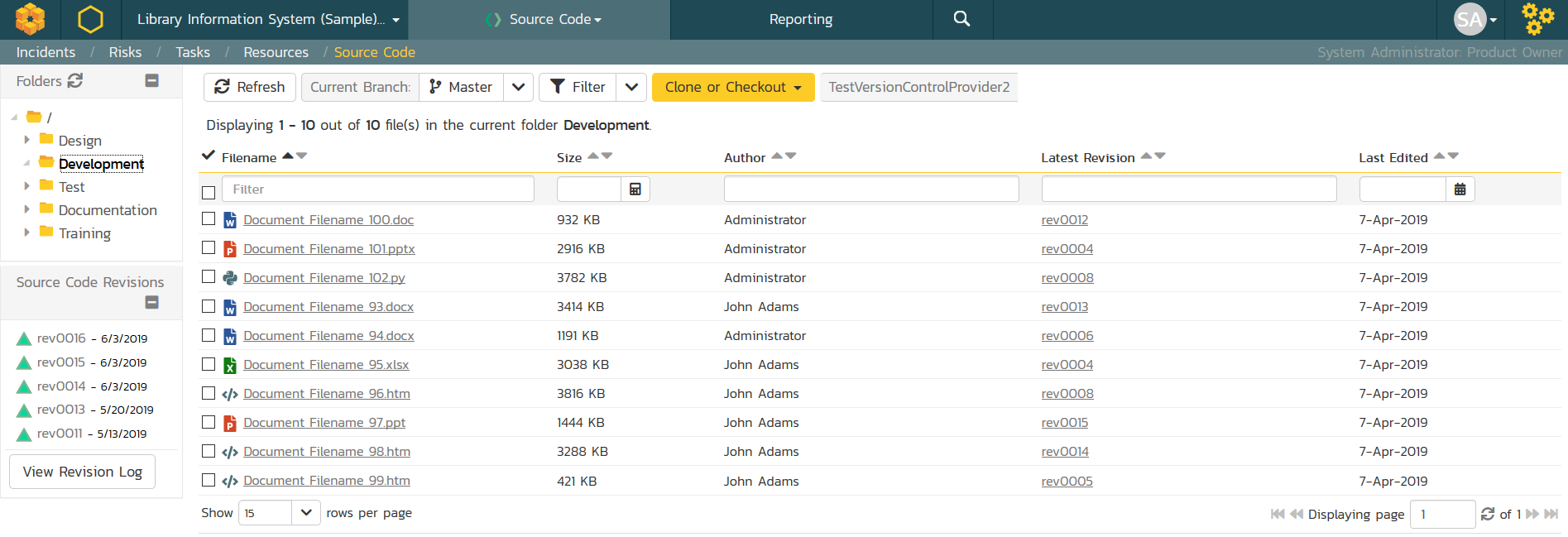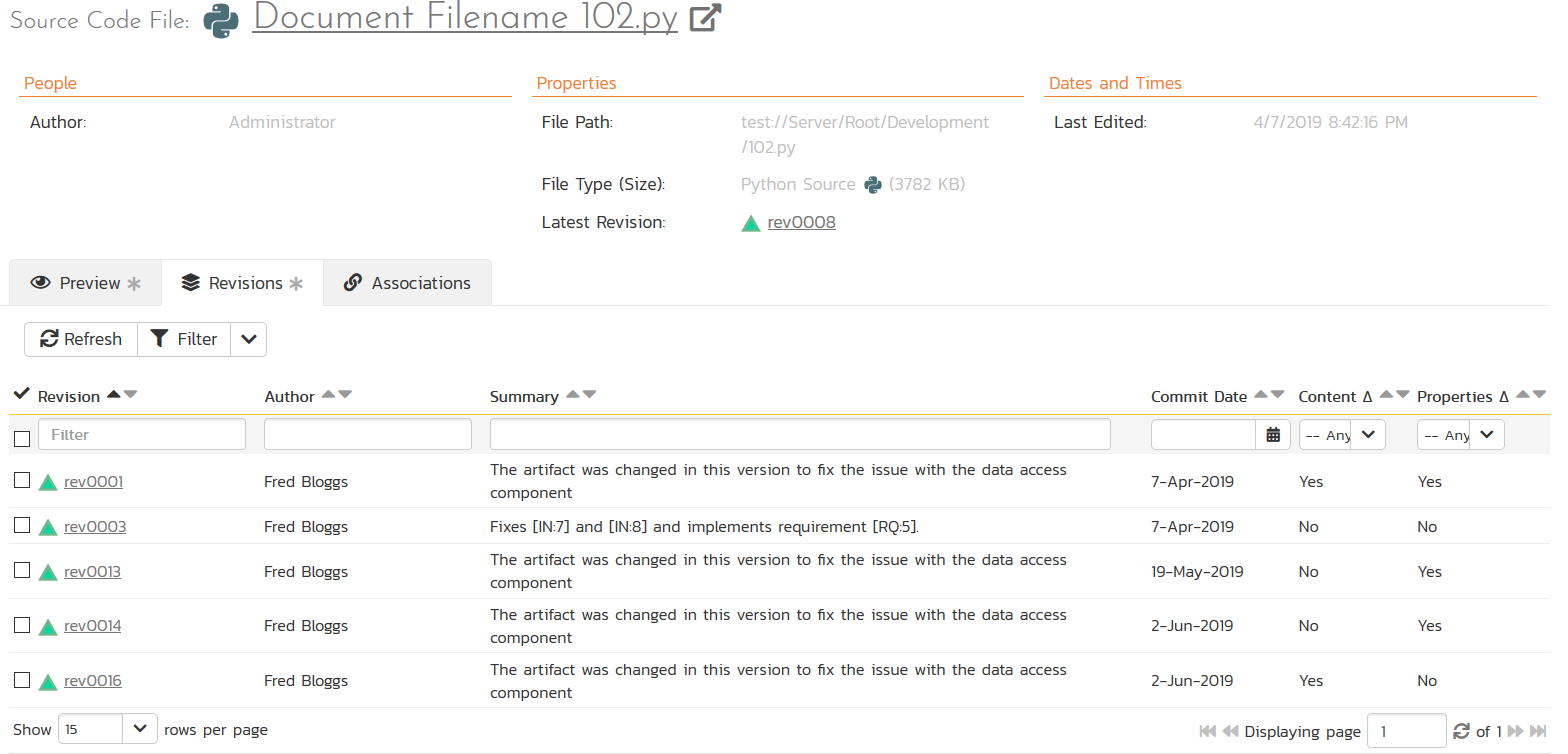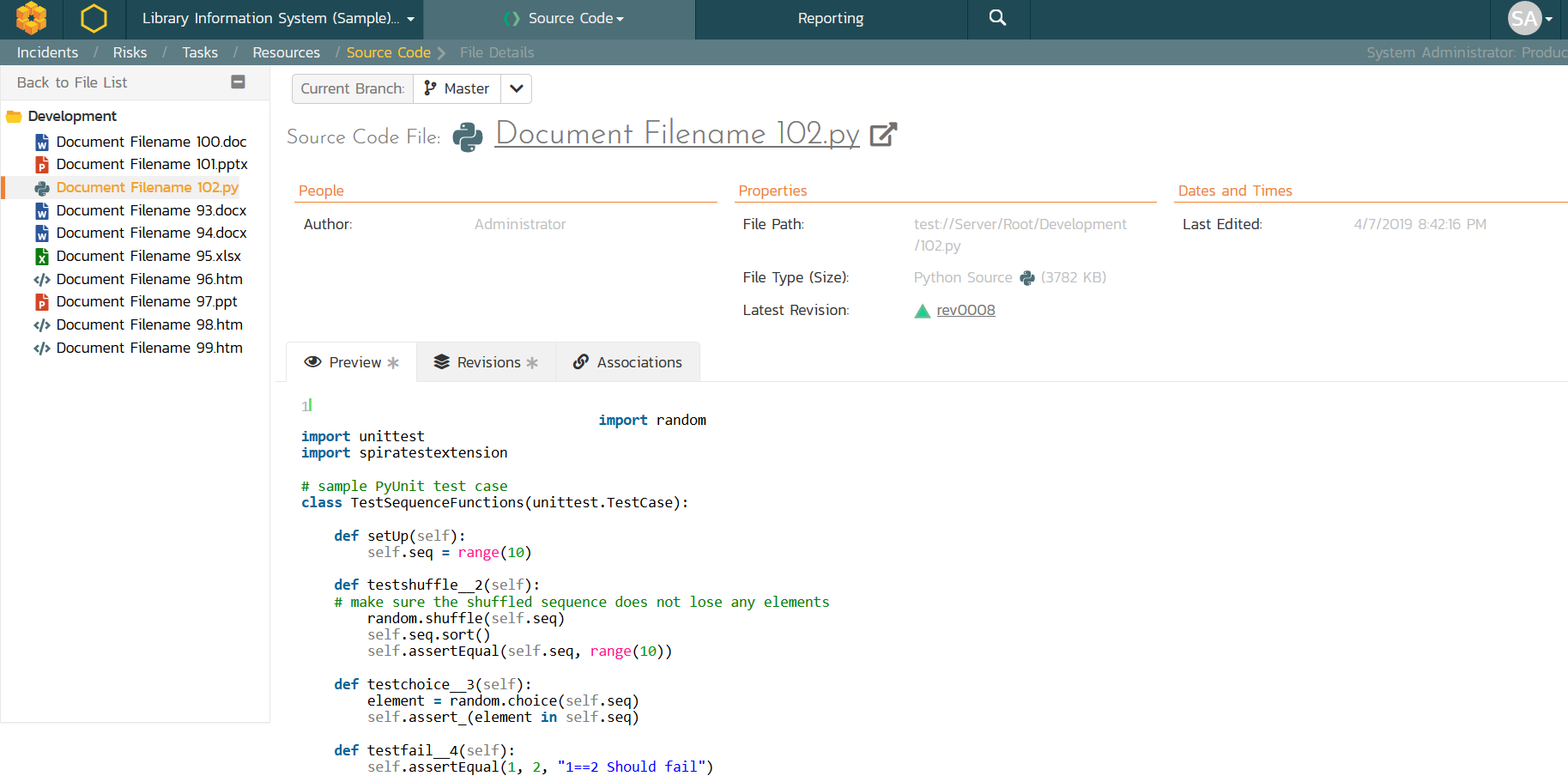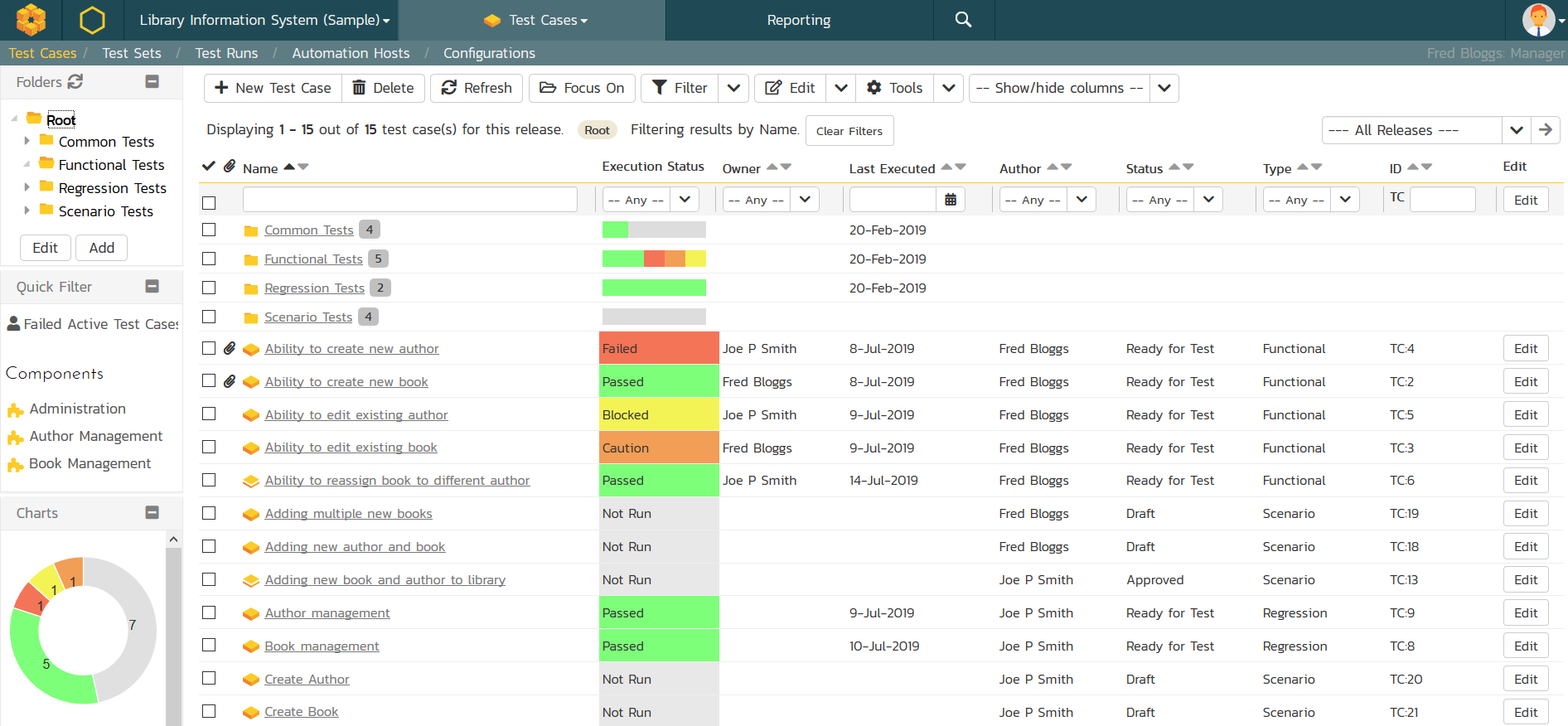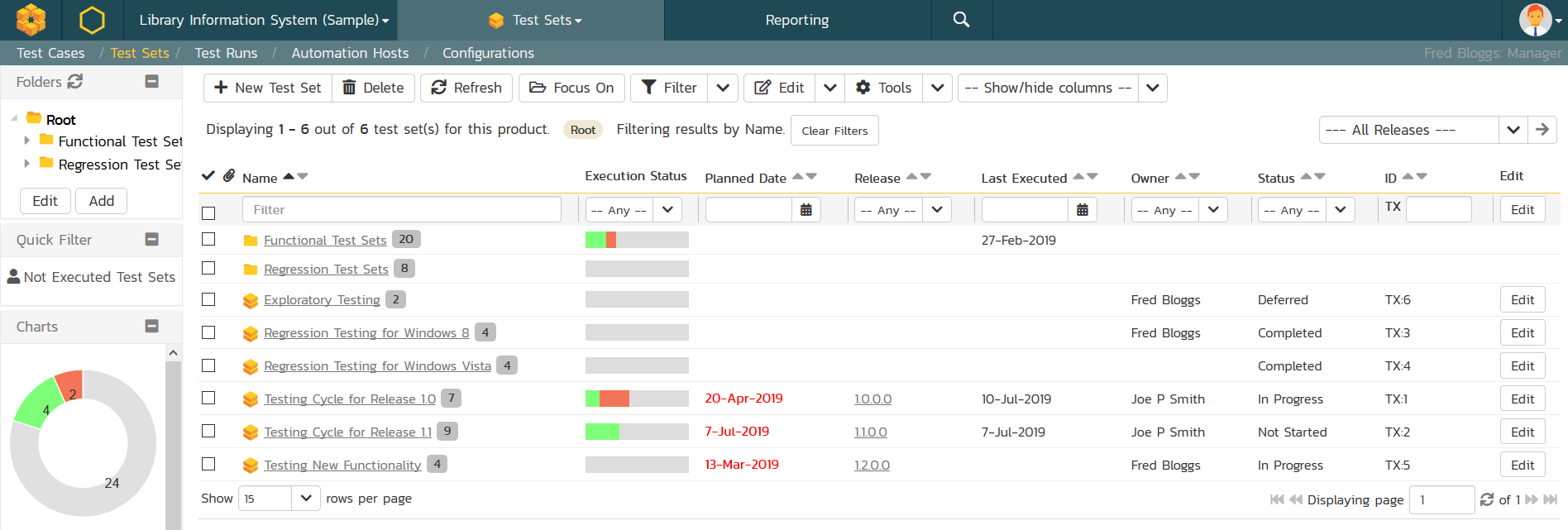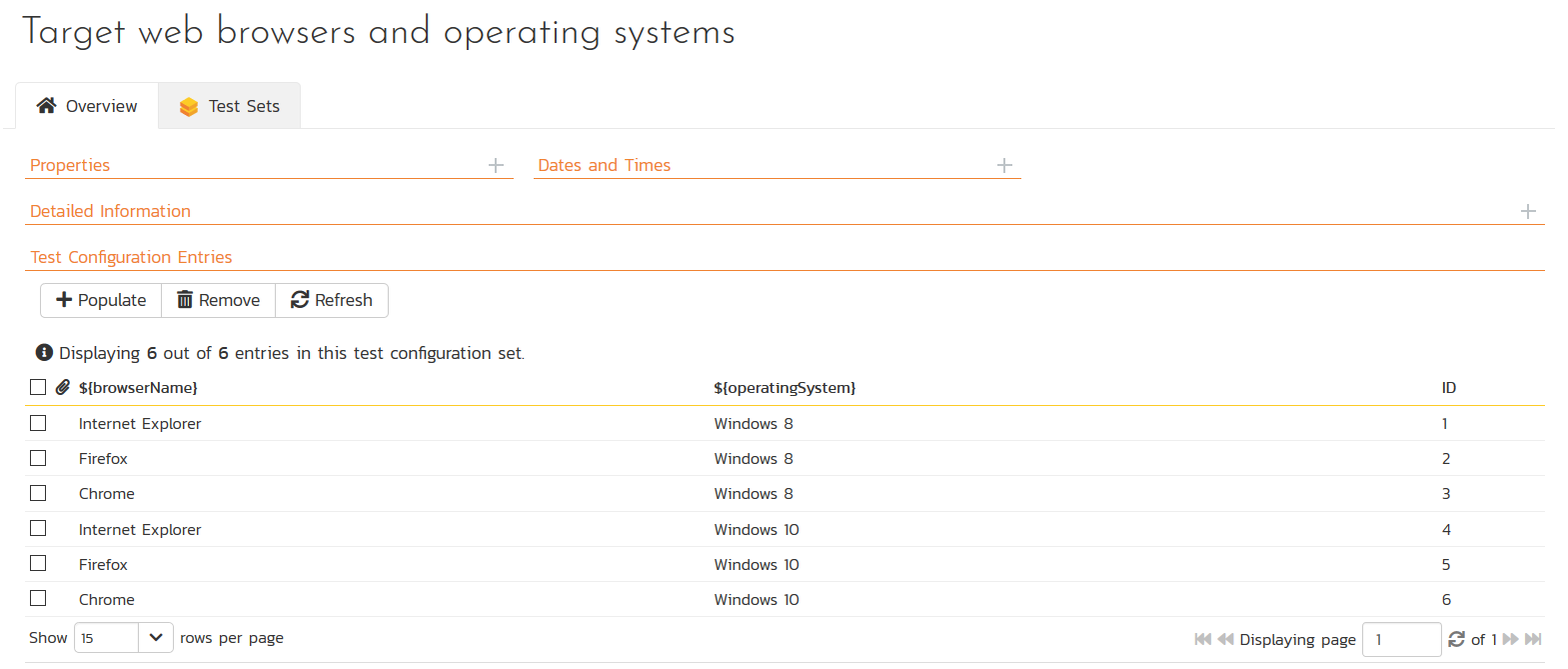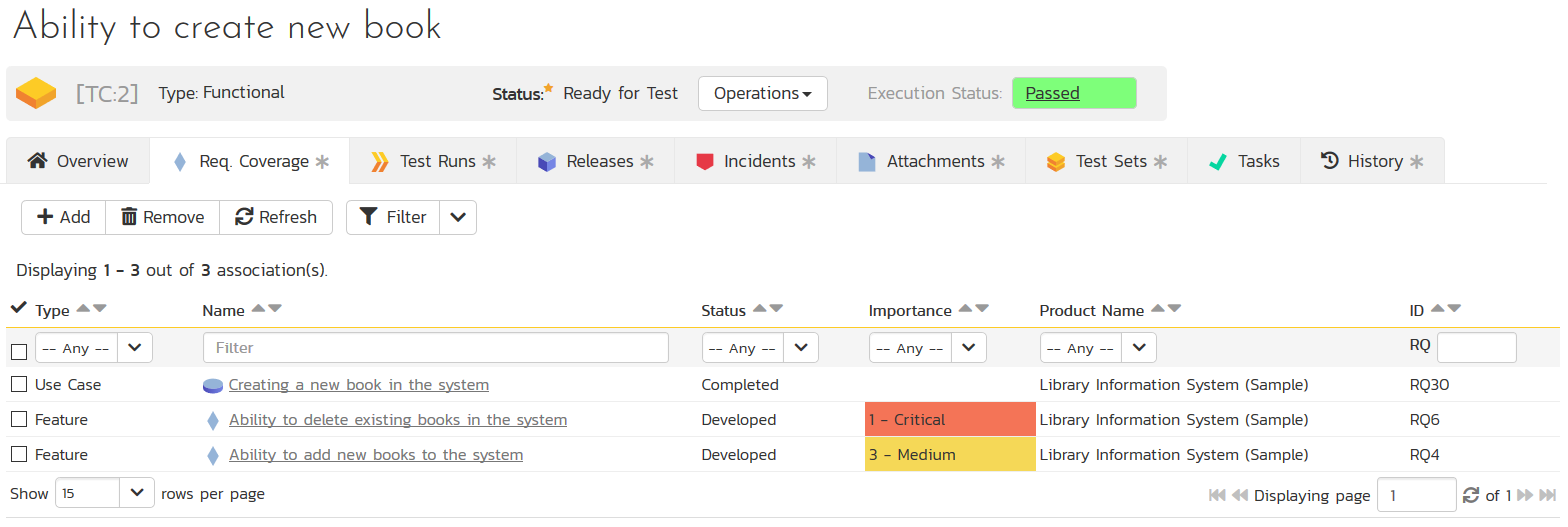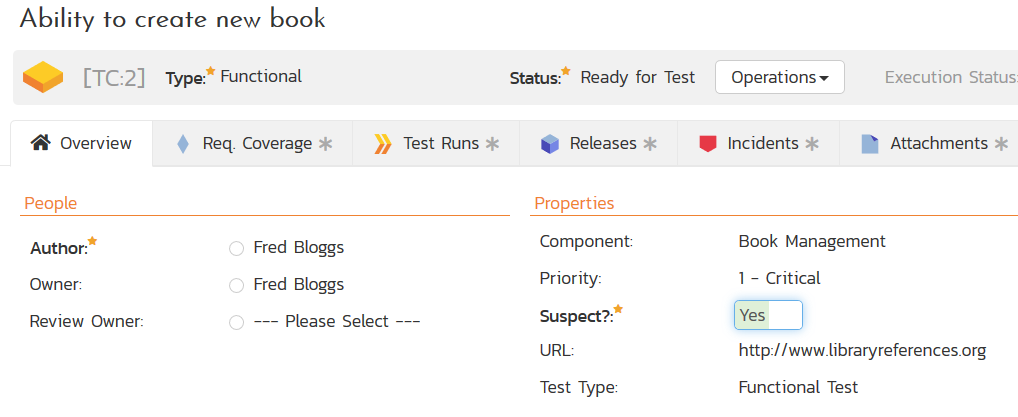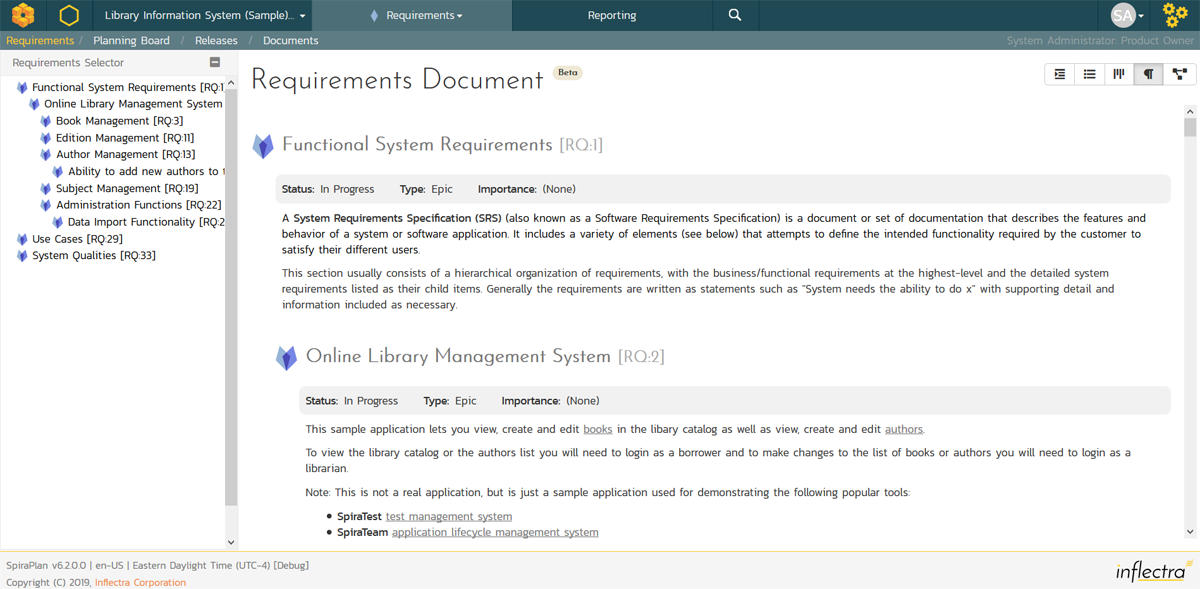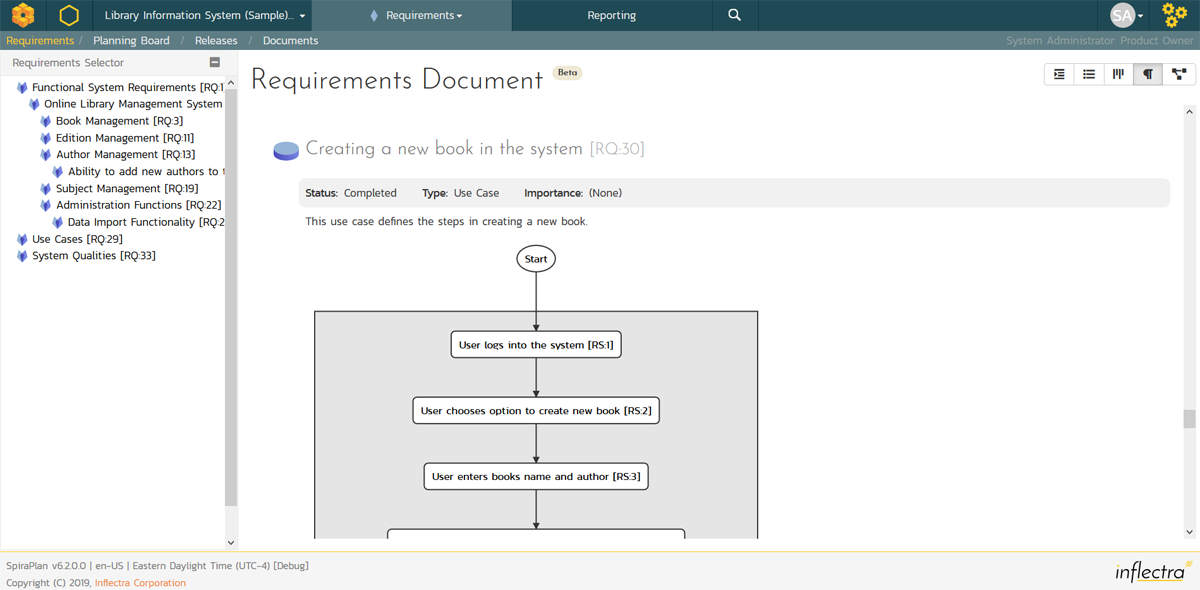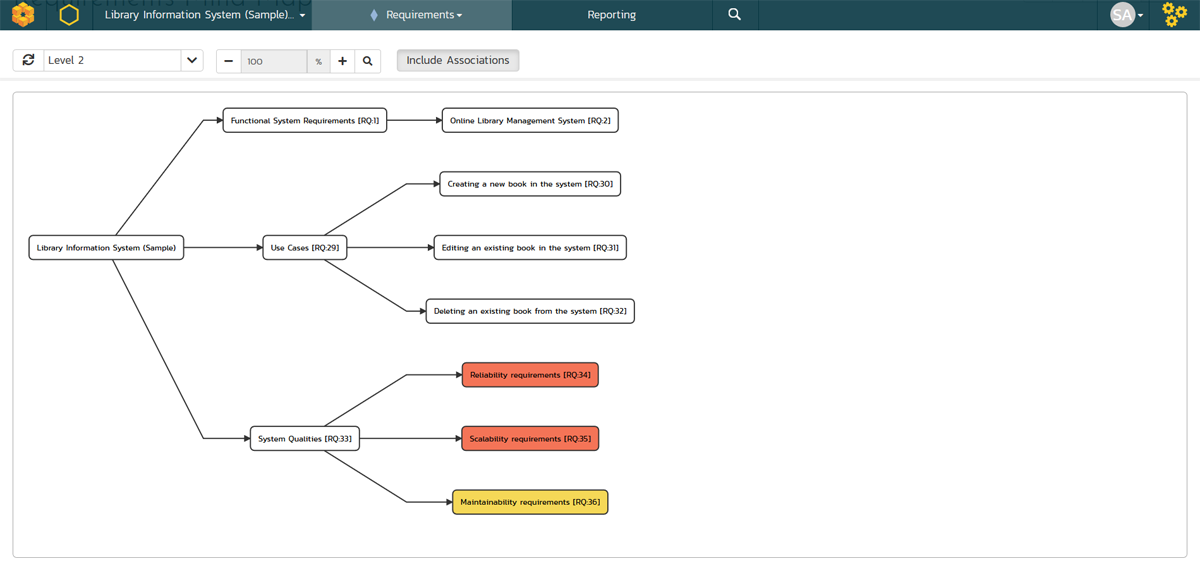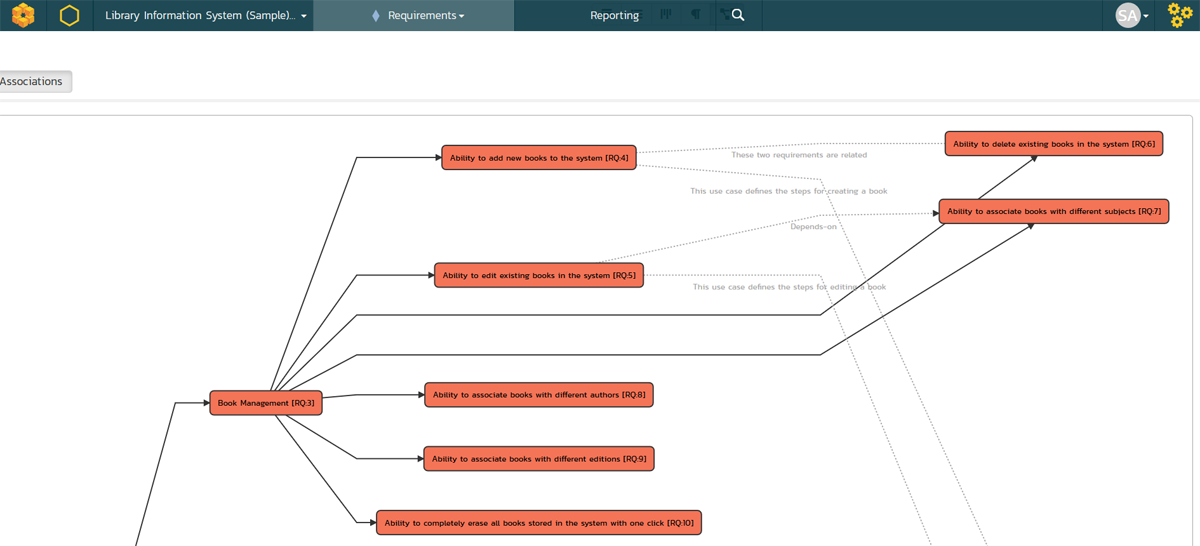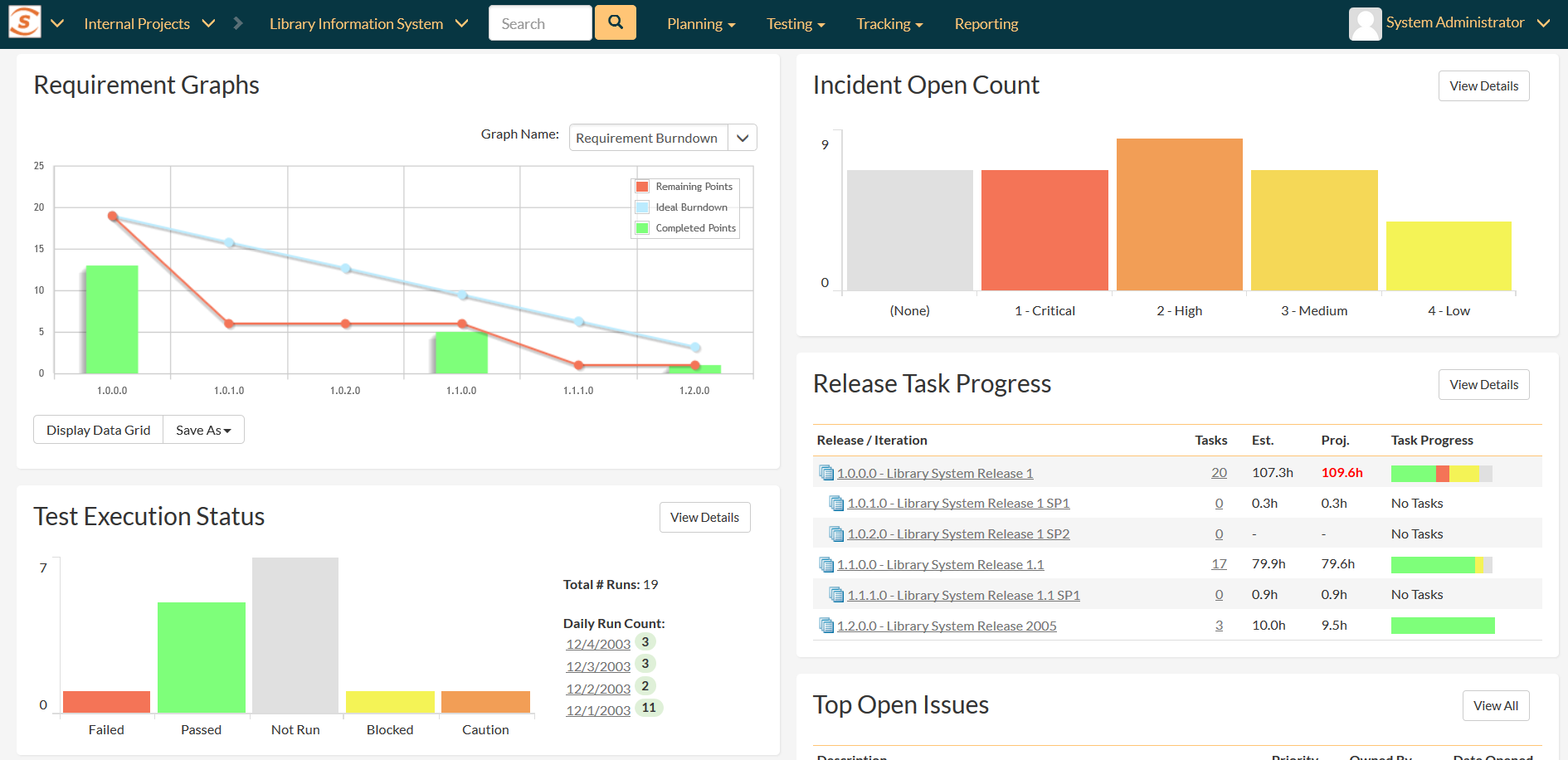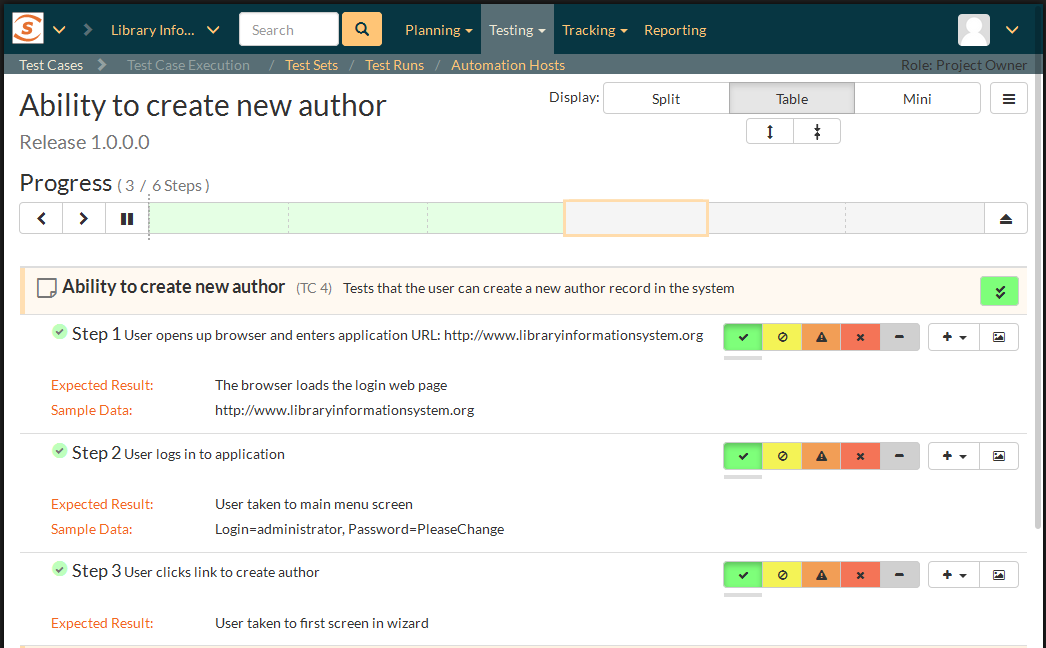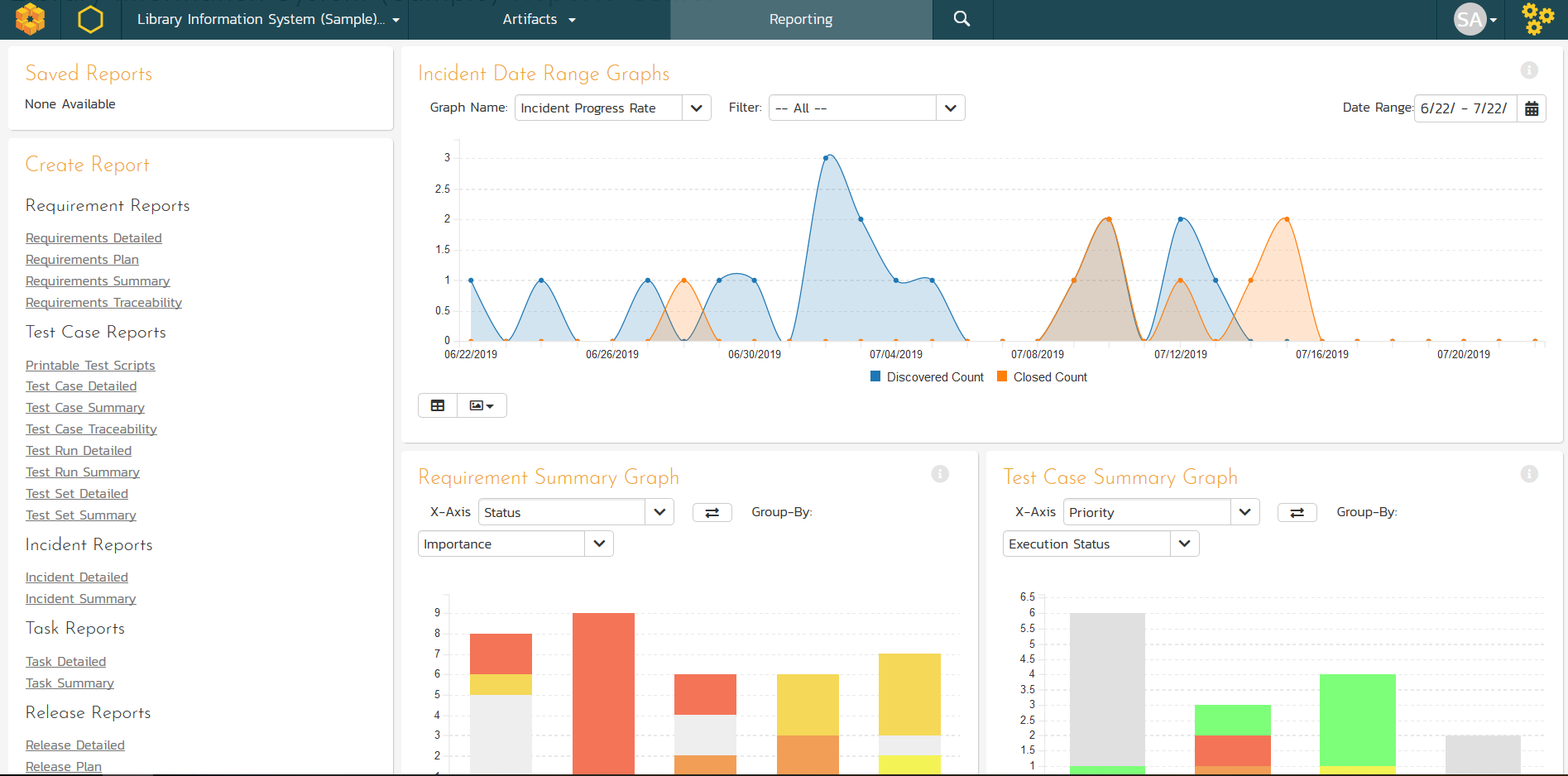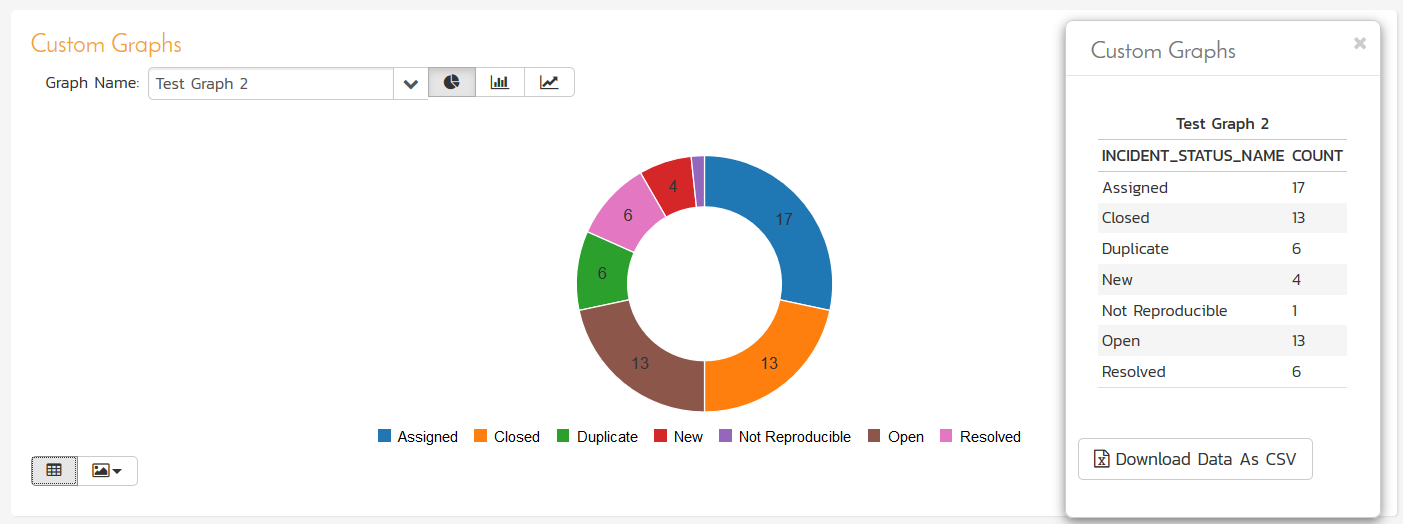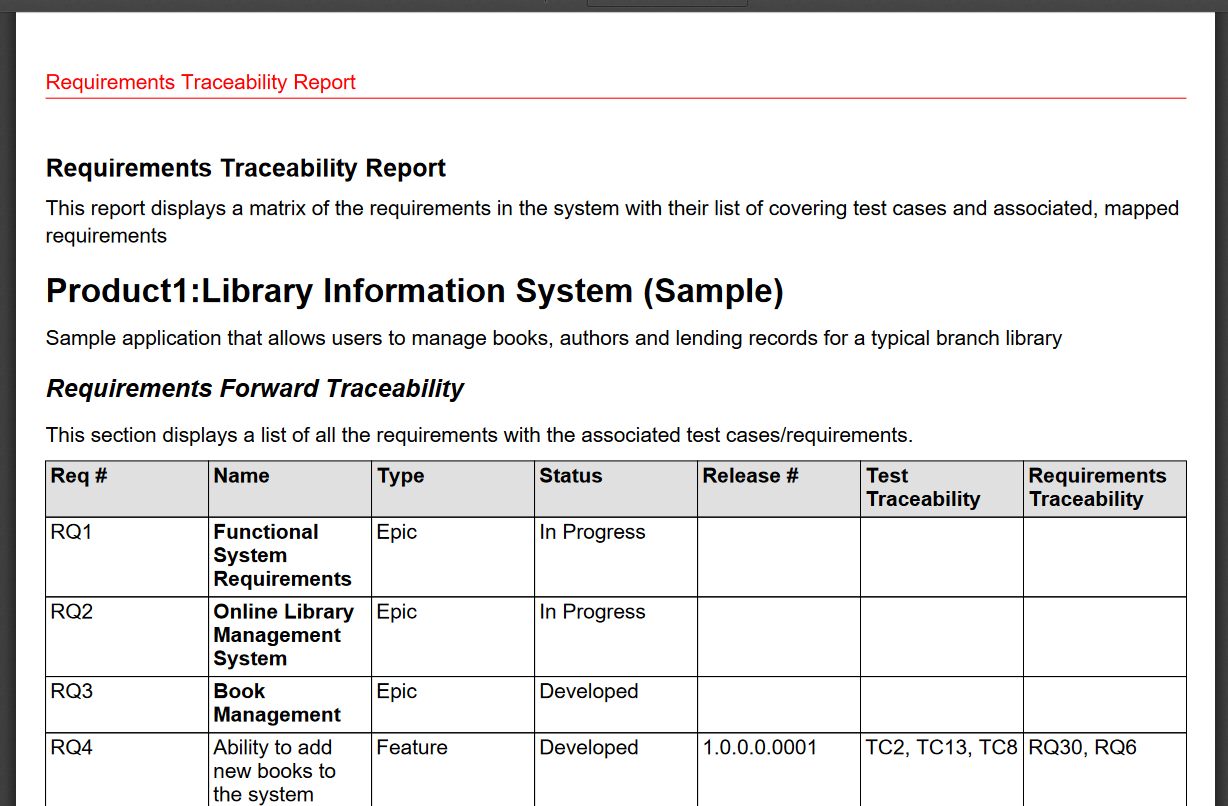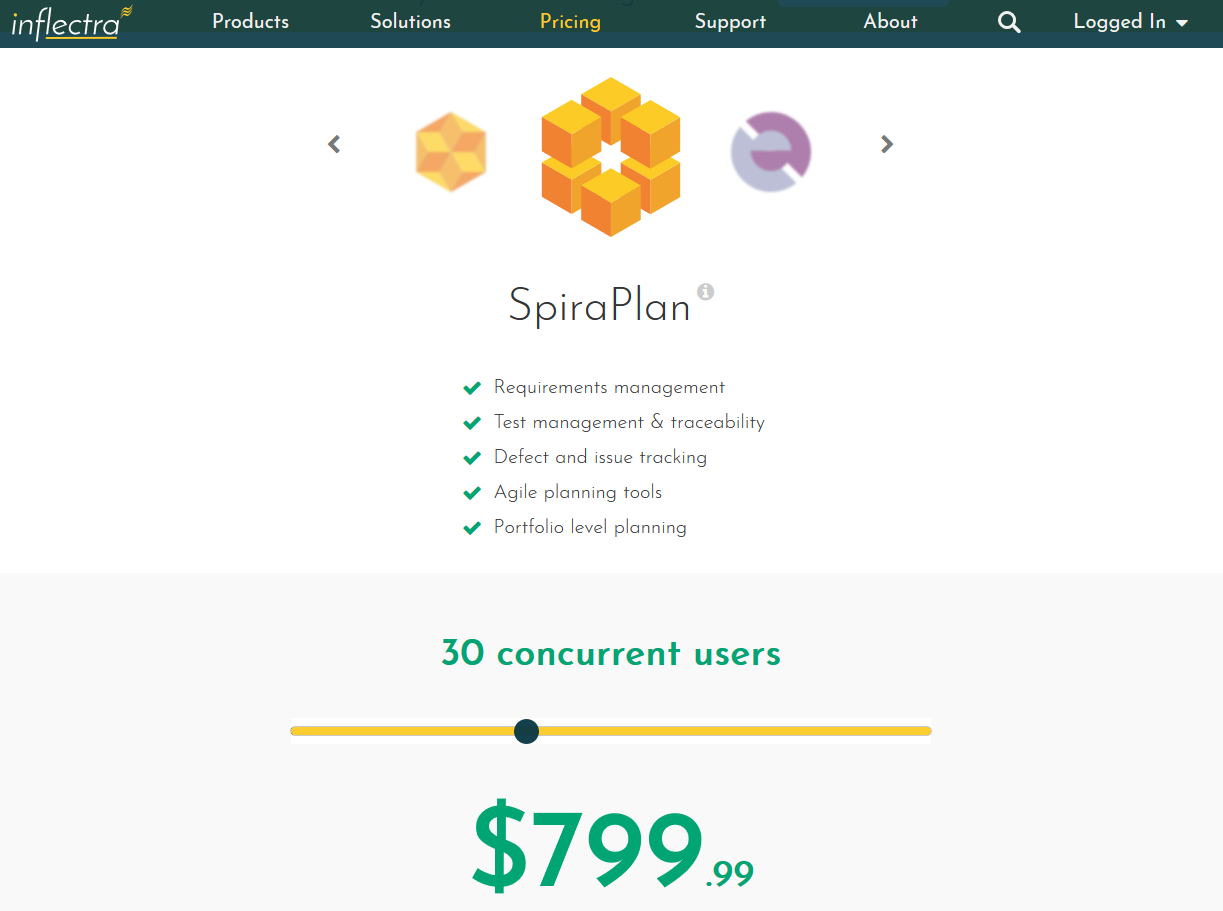Top Features for Product Development Tools
SpiraPlan is an easy to use, complete solution for managing your product development lifecycle. Here's the top 10 reasons you should choose SpiraPlan over other tools on the market that offer features for product development.
1. Fast, Modern User Interface
SpiraPlan is a modern web application designed with the idea of putting the user first. When you log into SpiraPlan, it provides a fast and responsive experience, with dashboards of key information displayed right from the start. It uses modern web technologies such as JavaScript, Ajax and ReactJS and lets you be productive from any place.
With SpiraPlan, you can quickly see important metrics for your projects, then drill down to manage your project’s requirements, test cases, defects, and tasks with a consistent seamless user experience.
Each of the modules has been designed to work consistently so that once you’ve used the test case management functionality, you are already familiar with how to write requirements, log bugs and track project progress.
SpiraPlan has a powerful rich text editor inside every artifact screen that lets you author requirements, test cases, risks, and documents just as easily as a word processor:
It even has support for tables, lists, images, diagrams and code snippets (with built-in syntax highlighting).
Make sure that the tool you are considering will support your way of working. Some tools have older, more dated user interfaces that your users will find confusing or cumbersome. Sign up for a trial version and make sure that the navigation and options make sense and will require little training.
Many tools only come with limited text editors that support plain text, wiki markup or markdown but not full rich text. If your users are moving from document solutions or tools that already provide this, they may expect that they can write, use tables, bullets and other formatting elements as easy as a word processor.
2. Get up and Running in 10 Minutes
SpiraPlan is designed to require no up-front configuration. Whether you choose our convenient and secure cloud-based service or install SpiraPlan on-premise, you can open up a web browser, login as the administrator, create a project, add some users and be up and running in as little as 10 minutes.
SpiraPlan comes with a complete set of requirement, risk, test case, task, and defect workflows, configured out of the box. It comes with a complete set of reports, graphs and dashboards and email notifications, all pre-configured for the most common needs.
You can configure the system with custom workflows, fields, reports, and templates as you need, but are there no configurations needed to just get going.
With many other product development tools, you are expected to spend considerable time upfront setting up the system, designing the workflows and modelling your processes and the relationships between artifacts.
Some of these other tools will require you to spend several weeks to get the system fully configured and up and running, we’d rather you spend that time testing, developing and managing.
3. Fully Integrated Risk Management
SpiraPlan includes a fully integrated risk management system, that lets you manage risks, mitigations, action plans and deadlines in the same system as your requirements, test cases and project plans.
SpiraPlan has a full risk review and mitigation process, you can associate multiple mitigations with a single risk and then track the actions to completion.
Since SpiraPlan has a full project management module, the risk mitigation tasks flow seamlessly into your integrated project plans and agile boards:
You can associate risks and associated tasks with requirements, test cases and other SpiraPlan artifacts for full end-to-end traceability.
Most tools for product development don’t include a built-in risk management capability, and those that do typically have it more as an afterthought. For example, some may have more of an Excel-like interface for editing and creating risks, where each risk is a line item, with the mitigations and actions plans acting like cells in a spreadsheet.
See if the tool you are considering has the planning functionality built-in and integrated with risk management; it can be difficult to keep track of the action plans associated with the risks otherwise.
4. Agile Planning & Tracking Right Out of The Box
SpiraPlan is not just a requirements and test management system, it also helps you plan and manage your software development projects. It provides a complete agile software planning system right out of the box. With SpiraPlan, you can prioritize and groom your product backlog:
You have powerful tools for managing your projects, regardless of whether they use Scrum, Kanban, or another agile methodology. SpiraPlan has pre-built views that let you manage the backlog for releases and iterations / sprints.
SpiraPlan includes pre-built agile graphs for managing your burndown and velocity, both at the requirements / user story level and for individual tasks:
SpiraPlan includes resource managing features so that you can track the assignments of work throughout your projects, releases and sprints.
You can see the resource workload in a variety of formats including resource grids and planning boards:
In addition, SpiraPlan includes a timesheet manager so that users have a single place where they can enter their time worked on tasks, incidents and other work items.
By comparison, many product development tools don’t include any pre-built agile planning functionality, you have to integrate with a third-party system such as Jira, Rally, or VersionOne. You should decide if that’s important for you or not.
5. Cross Project Reporting and Program Management
SpiraPlan was designed with the program in mind. From the very first version we designed the system to have all of your program data centrally stored with the ability to report across projects and products using the prebuilt program dashboards.
SpiraPlan includes program-management planning tools that let you manage your product’s requirements, tasks and personnel across multiple projects:
SpiraPlan understands that projects are not always self-contained, the world is not always that simple. One project may be a component of a larger project, projects may share common requirements and features. With SpiraPlan, you can share artifacts between projects, so that you don’t need to manually copy items and keep them in sync.
Many other product development tools remain primarily focused at the product level, and getting cross-product visibility can be difficult. See if the tool you are considering has good cross-product dashboards and views, or whether it will require the running of separate reports and manually consolidating data outside of the system.
6. Tools for Continuous Development and DevOps
SpiraPlan includes world-class source code management capabilities, for our cloud-hosted customers we offer TaraVault, a robust, fully managed source code management system based on either Git or Subversion (you can choose per project which option you’d like).
For our on-premise customers, you can hook up SpiraPlan to Git, Subversion, TFS, CVS, Perforce or Mercurial. In either case, SpiraPlan provides a convenient web interface for viewing your files, branches, revisions and code.
SpiraPlan even includes a handy source code viewer so that you can see the code modules directly inside SpiraPlan, inline with syntax highlighting:
By comparison, many product development tools don’t include any pre-built developer or DevOps functionality, you may have to integrate with a third-party system such as Jira, BitBucket, GitLab, GitHub or Microsoft Azure DevOps.
7. World Class Test Management Fully Integrated
At the heart of SpiraPlan is our SpiraTest test management system. SpiraPlan can therefore manage any size of testing challenge. It has a powerful test case repository that lets you manage and organize your test cases, manual, automated and exploratory, all in one place.
SpiraPlan supports many different types of test case, including traditional manual test cases with steps, data-driven parameterized test cases, BDD style tests, exploratory tests, and automated regression tests.
SpiraPlan includes a robust test suite management and scheduling system. This lets you organize your test cases into reusable suites that can be assigned for execution by testers, or by automation hosts for automated regression tests.
When you are testing large scale applications and systems, you need to be able to test across different permutations of test data and environments. SpiraPlan has its unique Test Configurations module that lets you create and manage sets of test data and feed them into your test sets.
This lets you execute the same sets of tests across multiple different data permutations and have the results roll up to the original requirements.
Of course, SpiraPlan has end to end requirements test coverage for the ultimate in requirements test case traceability. You can easily associate multiple test cases with multiple requirements quickly and easily.
When requirements change, the affected test cases are automatically flagged as ‘suspect’ by SpiraPlan so that you can update the test cases to ensure alignment with the changed requirements.
In comparison, many product development tools have relatively basic test management capabilities that only allow you to manage simple test cases, test cycles and test runs.
When you need more advanced test management or quality assurance capabilities (for example having data-driven testing, scheduling automated tests), you might need to use a third-party solution such as SpiraTest, Test Rail, or TestLink.
8. Multiple Requirements Views for Different Audiences
SpiraPlan provides multiple different views of requirements, user stories, use cases and other aspects of the requirements specification for different audiences.
For the business analyst community, SpiraPlan has a requirements document interface that focuses primarily on the content of the requirements, in a simple, easy to use interface that will be familiar to users who think of requirements as interconnected documents rather than discrete work items.
This document view will also include any diagrams that are generated by SpiraPlan for entered use case steps and process flows:
SpiraPlan also includes a requirements mind map view that focuses on the relationships between requirements and other artifacts in the system.
This requirements view lets you visualize the relationship between requirements as well as graphically trace the links between requirements and other artifacts in the system.
Finally, for the project and quality managers, SpiraPlan has a hierarchical view that lets you see the progress and quality of the work associated with the requirements. For each requirement you can see the associated test execution status and task progress.
In comparison, a lot of legacy requirements management and product development tools primarily work with an ‘Explorer’ style interface, with the modules and folders on the left, and line-items on the right. Many of them offer limited relationship diagrams, but don’t typically offer a full mind-map diagram of the actual requirements in the system.
Similarly, many tools don’t provide a clean ‘document’ style interface. If that’s the case, it can make it more time consuming and cumbersome to see all of the requirements in a specification together in context.
9. Fully Mobile-Responsive Interface
SpiraPlan is a modern, responsive web application, it runs on all the major browsers (Chrome, Safari, Firefox, Opera, Edge and IE) on desktop computers, fully supporting Windows, Mac and Linux environments.
Not only that, SpiraPlan is 100% mobile responsive, with all the screens dynamically scaling to work on cellphones, tablets and other mobile devices. With SpiraPlan, your testers can run tests and record results on a tablet.
With SpiraPlan, executives, program managers and clients can see their projects’ real time progress and quality metrics right from the convenience of their mobile phone:
Many product development tools provide merely a traditional web application may not be well designed or suited for browsing on mobile devices. If this is important to you, check to see how usable it will be on a mobile device.
10. Easy to use Dashboards and Reporting
Each product and project in SpiraPlan has a dashboard home-page that summarizes all of the information regarding the project into a comprehensive, easily digestible form that provides a “one-stop-shop” for people interested in understanding the overall status of the project at a glance. It contains summary-level information for all types of artifact (requirements, test cases, incidents, etc.) that you can use to drill-down into the appropriate section of the application.
SpiraPlan has a powerful set of reporting dashboards where you can select from a large range of graph types (spline, donut, line, bar, etc.) and create a custom reporting dashboard to suit your needs with just a few clicks:
Using the latest JavaScript c3/d3 reporting platform, the SpiraPlan graphs and reports offer real-time data highlighting and tooltips that let you drill down into the data.
Finally, there is a built-in report document generator that lets you publish sophisticated reports in PDF, MS-Word, Excel, HTML and XML formats. The custom report writer built into SpiraPlan lets you create reports from scratch using the built-in query language so that you can generate all of your company's metrics from within SpiraPlan.
Check to see what reporting and graphing needs your users will have and check to see if the tools you are considering will support them.
One More Thing: Can You Afford to Invest In the Tool?
We believe that quality software should be affordable for all sized organizations, from the smallest startup to the larges enterprise. We also believe that it should be easy and transparent to find out what the pricing is.
We also realize that you may have users that are only going to use SpiraPlan occasionally, for example to login to review requirements, view executive dashboards or check out the project risks before a meeting. For this reason, SpiraPlan exclusively uses concurrent user licensing so that you are not penalized for having occasional users.
By comparison, many other tools and products don’t publish their pricing on their website. This means that you will need to have a lengthy contractual process, and the final agreement may lock you into a specific number of licenses for different role types (50 authors, 20 reviewers, etc.) that make it hard to expand usage of the tool in your organization without paying a financial penalty.
Remember that choosing a tool for product development is a long-term commitment, make sure that you can afford to stay with the tool for the long term, and avoid focusing on short-term “teaser” discounts that may not let you scale (e.g. the first x users are artificially low).
Ready to Give SpiraPlan a Try?
We hope this evaluation guide was useful for you.
To sign up for your free trial of SpiraPlan (no credit card required), just click here.
TRADEMARKS: Inflectra®, SpiraTest®, SpiraTeam®, SpiraPlan®, and TaraVault® are all registered trademarks or trademarks of Inflectra Corporation in the United States and other countries.





